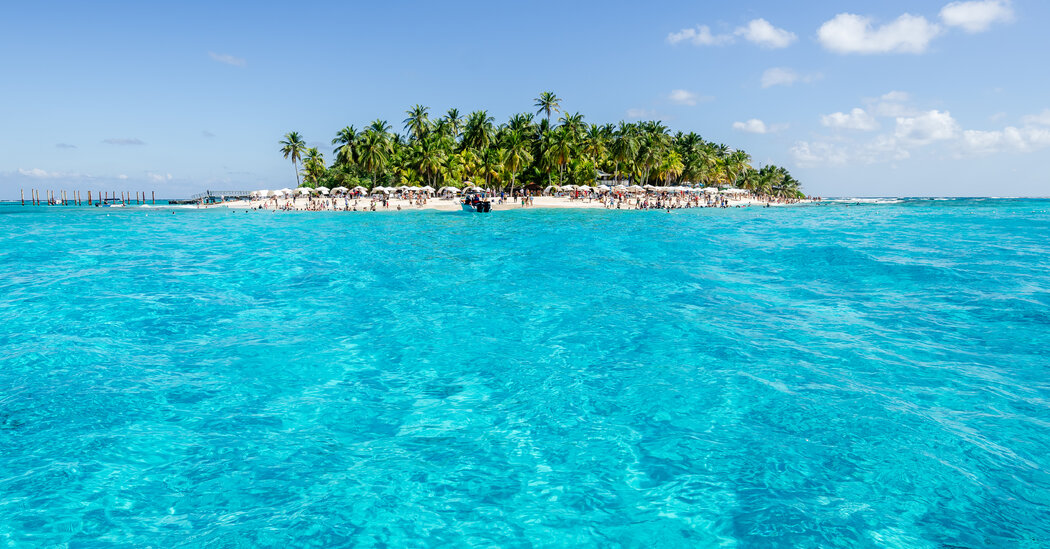On San Andres, a small Colombian island in an archipelago off the Caribbean coast of Nicaragua, counting the blues in the famous “Sea of Seven Colors” is on every visitor’s to-do list. It’s a midday activity done en route as you cruise among the cays, or keys, dotting San Andres’s eastern side: low-lying (mostly) uninhabited specks that aren’t much more than coral topped with palm trees and circled by sandbars.
From my bobbing perch, I counted six: a deep sapphire, a dusky azure, stripes of teal, turquoise and cerulean and, in the distance, a swath of brilliant cyan against the edge of a tiny, palm-fringed island.
“Do you see seven?” the boat’s captain asked.
When I told him my tally, he laughed. “Six?” he said. “That means you can still relax a little more.”
San Andres is not on the radar of many U.S. travelers, but in Latin America, and especially among Colombians, it is a coveted honeymoon destination or a long-weekend retreat — a spot in the middle of the ocean to disconnect from whatever weighed you down on the mainland.
Connecting with history
The archipelago of San Andres and Providencia is more than 400 miles north of the mainland of Colombia, and closer to 100 miles east of Nicaragua, but thanks to a historical wrinkle that is still being ironed out, it is part of Colombia.
Kent Francis James, 73, was the archipelago’s governor during the 1990s and advised the current local and national government on boundary issues with Nicaragua. But his passion, he said when I met him on San Andres, is helping tourists connect more deeply with the island’s history.
“We want you to come here not just to get your skin burned, but to bring home a better understanding of Caribbean history,” he said, as we sat on his home’s balcony and enjoyed the view of the water in the distance, framed by bougainvillea and palm trees.
Mr. James scanned the horizon and pointed out the shipwrecks that litter the island’s waters. “We were geographically on the route of the Spanish going up the coast with gold, so this is the place the pirates used to be on watch,” he explained, describing how voyagers often underestimated the shallow waters surrounding the islands’ many cays and ran aground — to the delight of pirates like the Welsh-born Sir Henry Morgan, who is believed to have used San Andres as a base of operations.
We were technically in Colombia, but Mr. James spoke in clipped English — his accent itself a nod to the island’s…
Click Here to Read the Full Original Article at NYT > Travel…
